This is fishing with nets under the ice. You might wonder how to put the fish nets under the ice in the first place. I don't have any pictures of that, but there are two ways: either you can leave a thin nylon rope underwater before the lake is frozen - mark the end points with floaters and tree twigs so you find the rope later - or just wait for the lake to freeze properly and then make holes in the ice, and use long poles or sticks to put the nylon rope in its place under the ice cover. This is bronze age technology - except for the nylon.
For one fish net, the rope is about 30 meters long, and the ends are attached to sticks or fir-tree twigs that stick up from the ice so that it is easy to find them. So, now that you have two holes in the ice and a rope between them under the ice, you attach your net to one end of the rope and pull the other end to pull the fishnet to its place under the ice. And in a day or two, you can go back and open the holes and check if you caught any fish. Repeat every other day or so, through the winter. That's what we did today.
We went by car, driving on the ice. The ice layer is maybe 30 cm thick so it carries a car very easily and without risk, though the usual procedure is still that we take off the seat belts when on frozen lake. There's nothing you can collide with, and it's not even possible to stop very quickly, so the belt is not adding any safety, an it's nice to think that should the ice turn out to be weak, you can get out of the car quickly.
Note, the pictures are a bit blurry - today we went to the ice around the time of sunset, 2PM, so it was getting dark, and it was a cloudy day, so even with f/1.8 the pictures are grainy. But though the day is short, it doesn't get dark very quickly, and you can work for an hour or two even after the sun has gone down. It's all white around you, so even the tiniest light is enough for working, if not for natural-light photography, or finding your way around.
This Christmas, there's not that much snow yet in Karelia - just 15-20 cm, much less than in Helsinki - so fishing is convenient: you can drive anywhere on the ice, and just park right next to the bigger of the holes in the ice. This is the main hole which is used for pulling the net up and seeing if there's any catch. Most of the equipment is left at this place for all winter so that you don't need to carry it back and forth: there is a shovel for snow, a drill called kaira to make small holes in the ice, a large iron-pointed ice pick called tuura for breaking the ice, plus some smaller things.
The main hole has two or three nets going out to different directions. The hole is about 50 cm x 50 cm and has a styrofoam lid - with some soft snow on top of it - that insulates it from frost so that the water doesn't freeze too thickly overnight. When you arrive at the spot, first you take out the snow that is on the lid as additional insulator, then take away the lid.
Then you apply the large ice pick and break the ice cover from the main hole, and take out the slush from the water.
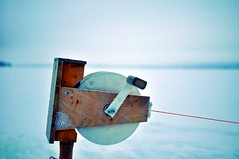 Standing right next to the main hole, there's a post on which there is a roll of nylon line in a sort of winch. You take the end of this nylon string, and pull it to the marker at the other end of the fish net, letting the string unroll from the winch. Once at the other end of the net, you drill a hole in the ice - the hole needs to be only about 10 cm in diameter. Through this hole, you push a stick which has a steel wire hook at the end, and use the hook to pull up the part of nylon string that is at the end of the fish net below the ice. Get the end of the net, untie it from the nylon string under the ice, and tie it to the end of the string that is attached to the winch.
Standing right next to the main hole, there's a post on which there is a roll of nylon line in a sort of winch. You take the end of this nylon string, and pull it to the marker at the other end of the fish net, letting the string unroll from the winch. Once at the other end of the net, you drill a hole in the ice - the hole needs to be only about 10 cm in diameter. Through this hole, you push a stick which has a steel wire hook at the end, and use the hook to pull up the part of nylon string that is at the end of the fish net below the ice. Get the end of the net, untie it from the nylon string under the ice, and tie it to the end of the string that is attached to the winch.Now, come back to the main hole. Use the stick with hook to pull up the other end of the fishing net through the main hole. And voilá, you can start pulling up the fish net through the main hole; the nylon rope is extended from the winch roll next to you, as the net pulls its end under the ice.
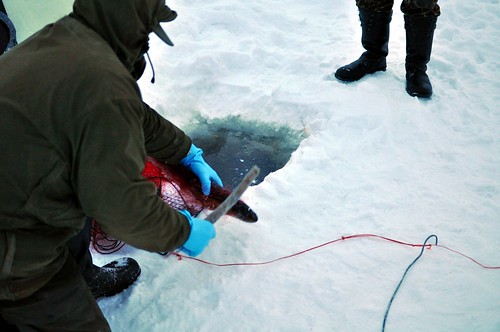
The fish is alive and struggling, so the next thing to do is to take the killing cudgel. Hit the fish at the back of the head to break its neck, and it won't suffer. And won't squirm.
Then take the fish out of the net. Here my father-in-law uses his patented tool - made of a piece of wood and a nail - to help the fish through the net. By the way, latex gloves are nice here. In the bad old days, you would do this with your bare hands. I can assure you that very healthy exterior blood circulation is necessary.
Now the fish is out, dead but fresh. It's cleaned on the spot: cut away the fins with scissors, cut open the belly and remove the guts, and use a scaling iron to remove the scales. No need to mess up the kitchen.
And then, just put the fish in your box. Once all of the net is checked, use the winch to pull the net back to its place. Go back to the other end of the net, untie it from the nylon string on top of the ice, tie it again to the string that is under the ice, and release it through the small hole so that it again fully under the ice, ready for catching new fish.
Repeat this procedure for all your nets, put your fish in your insulating box - the point is to not let them freeze as that spoils the taste - drive back, and your fishing trip complete. Drive home and heat up the stove for cooking!
A couple of years ago we did the same thing, but weather had been much warmer. Thus, the ce was too weak for driving, but a bicycle also works nicely!

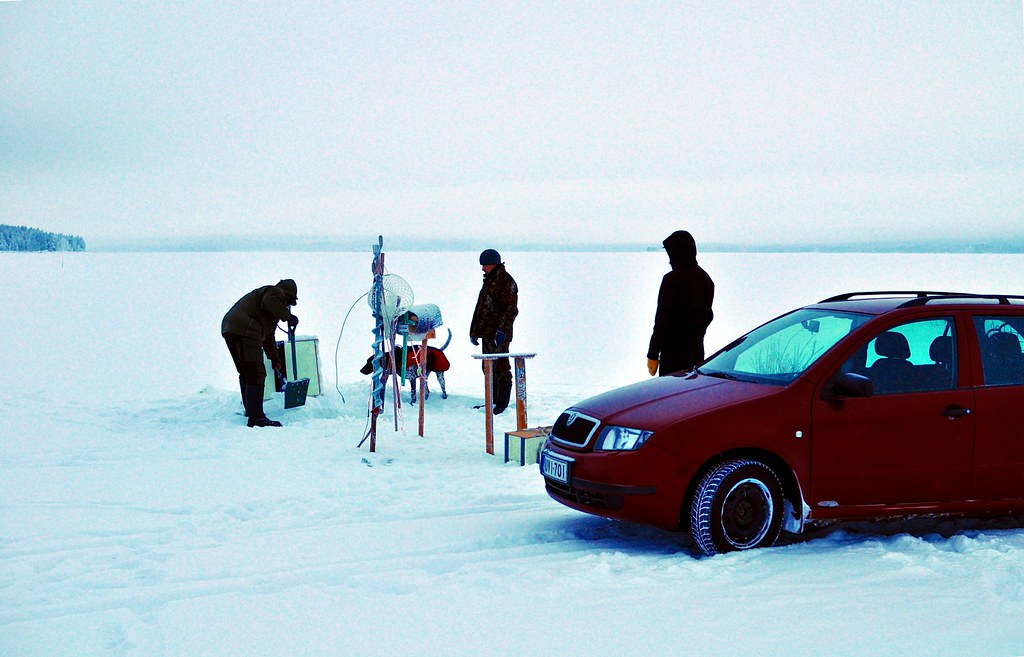
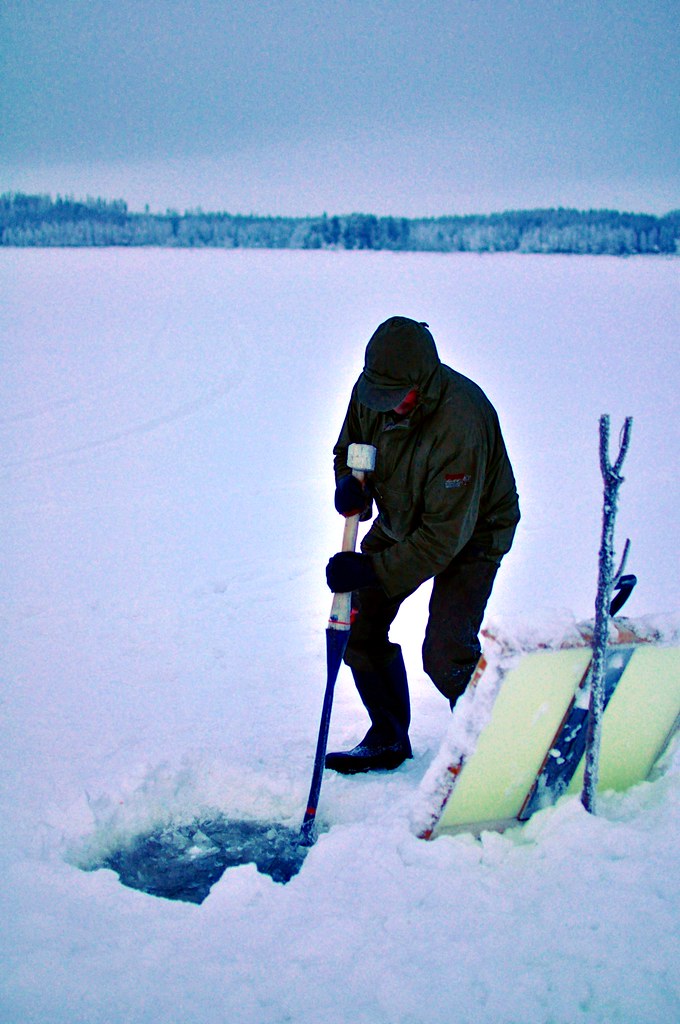
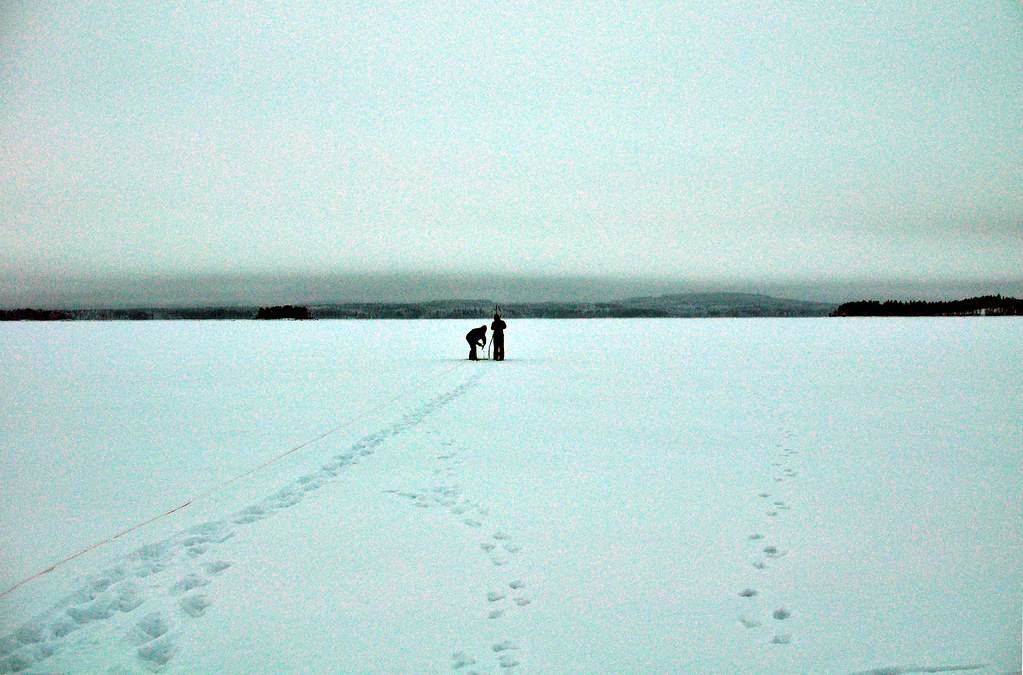

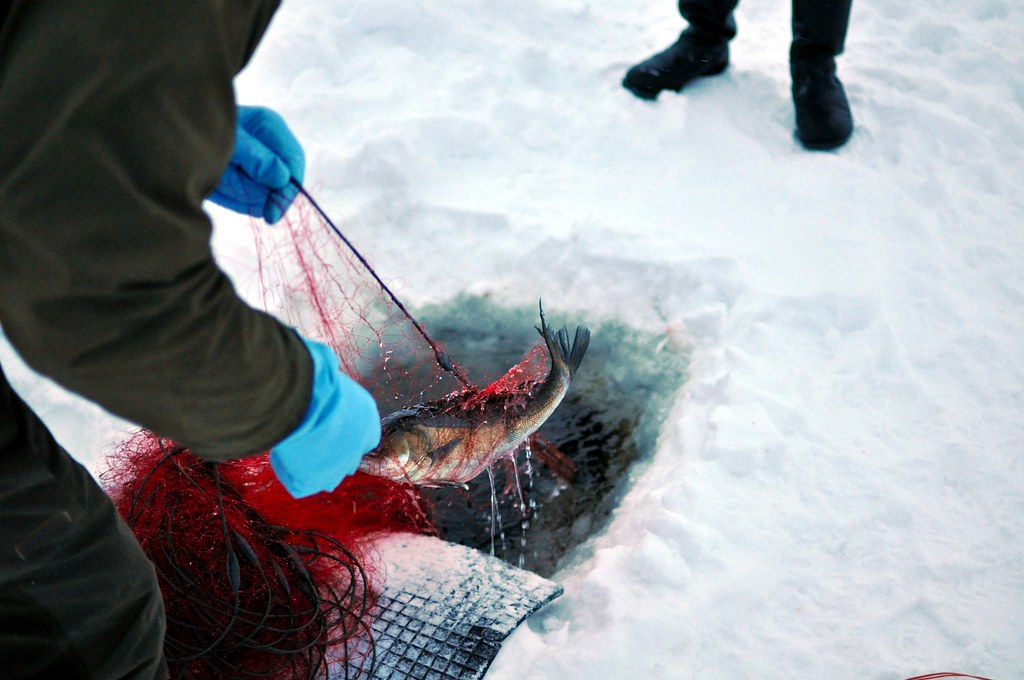



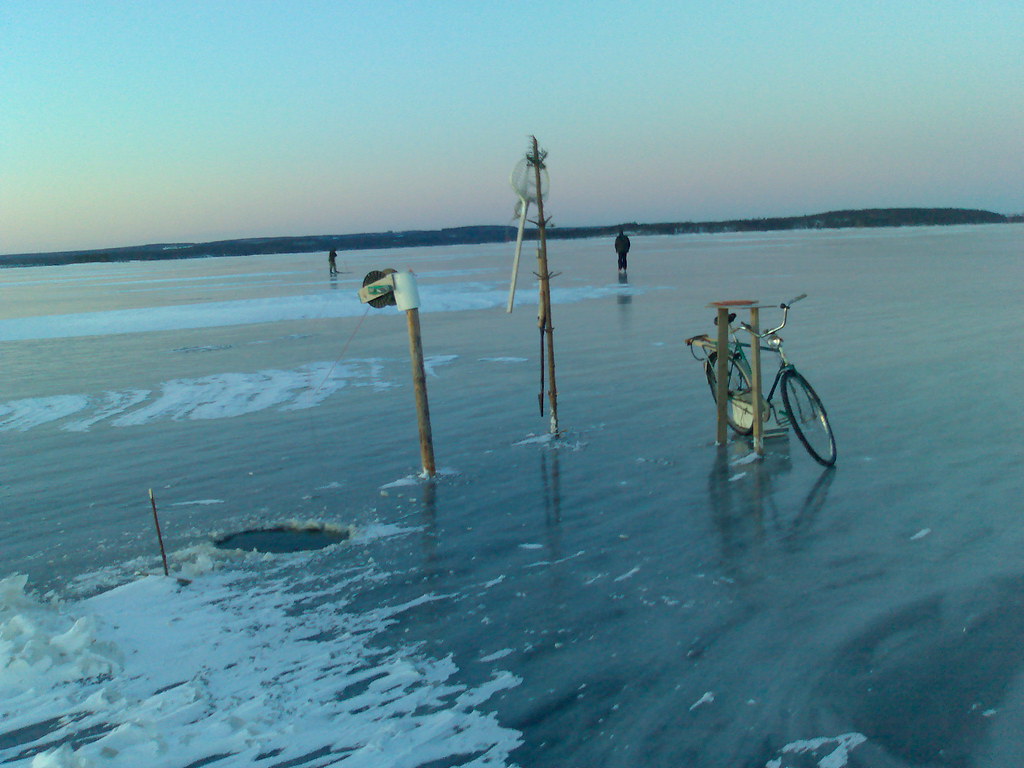
Ei kommentteja:
Lähetä kommentti